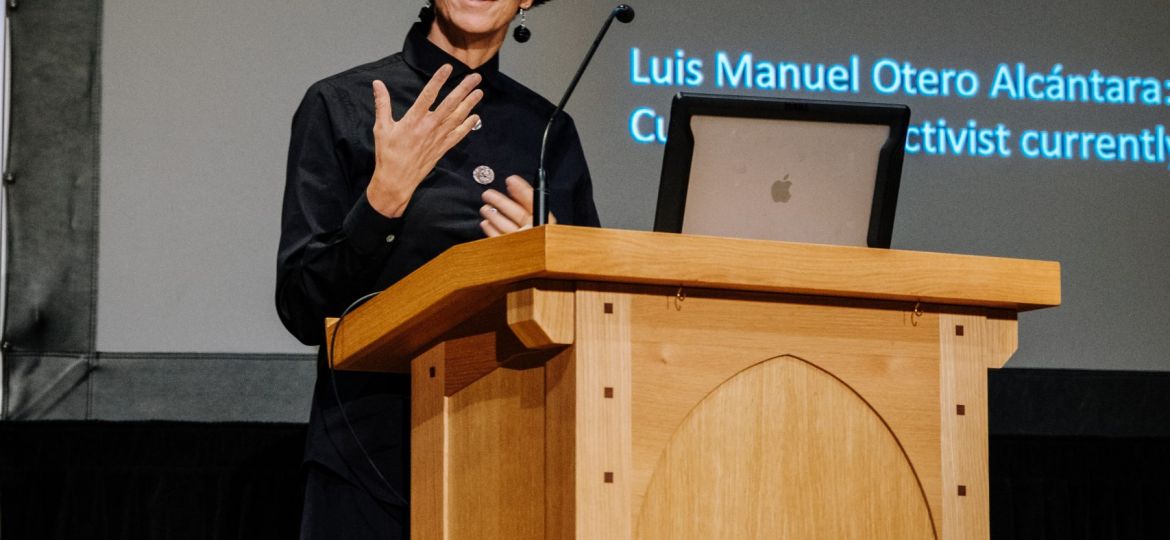
Flaten Art Museum’s current exhibition of “Swimming on Dry Land” by Coco Fusco is a resistance to the romanticization of Cuba’s past and an appreciation of the struggle of contemporary Cubans.
One section of the exhibition, a video titled “Y entonces el mar te habla (And the Sea Will Talk To You),” presents a shaky vision of the Gulf of Mexico. The viewers, situated in inner-tubes on the floor, listen to a disembodied narrative of a woman escaping Cuba as images of a half-submerged camera loom above. It is a dichotomy which defines the installation – contextualizing incomplete visuals with an understanding of the struggles of the past and present.
In a lecture at Boe Chapel titled “Haunted by History,” Fusco spoke about the moral crisis of art and journalism in Cuba. A veteran interdisciplinary artist, Fusco discussed her connections to the island’s culture, history and its evolving relationship with the U.S.
Fusco said for her, like many, “Cuba began as an idea.” Outsiders arrive with preconceived expectations which are shattered upon arrival. While the nation may be defined by its past as a communist antagonist, visitors quickly realize its citizens still have unique and nuanced experiences.
The government, however, does its best to stifle these experiences. In Cuba, according to Fusco, “art is one of the few arenas where individuality is visible.” Artists who are able to take advantage of a lucrative foreign market for Cuban art can sell their pieces for relatively high prices, which means the discipline has become one of the few that offer citizens a relatively comfortable living. But this comfort is reliant upon the acceptance of government restrictions.
Much of Fusco’s talk revolved around activist measures taken in opposition to these restrictions, specifically a policy called Decree 349. The decree criminalizes independent cultural activities and empowers government authorized inspectors to confisticate works and materials from unapproved artists. It is just one more step from an authoritarian regime to control its appearance to outside observers as well as the information and opinions available to its own citizens.
The great paradox that arises from Decree 349 and the broader actions of the Cuban government is that they effectively act as both an enabler and a regressor. Fusco argued that “the system is only effective because of this duality.” Officials understand the importance of art to the local economy, but also its importance as a mechanism for propaganda and idealism, so they provide economic incentives for artists to produce works that the state approves.
Years after the end of the United States’ embargo, even as Cuba becomes more connected than ever to the modern world, Fusco claims that authoritarian practices remain prevalent. In her lecture, the artist presented concrete evidence of governmental oppression, while in her installation she provides a glimpse of humanity by displaying the results of previous incidences of that oppression. Taken as a whole, the two provide a powerful argument against the Cuban government.
Near the end of her lecture, Fusco said, “you can be upset with the issues, but if you can’t figure out how to alert others it doesn’t mean anything.” “Swimming on Dry Land” and the accompanying lecture support this sentiment by turning the artist’s fear and anger towards censorship into a constructive exhibition that shines light on significant issues and incidents of repression within Cuba.

